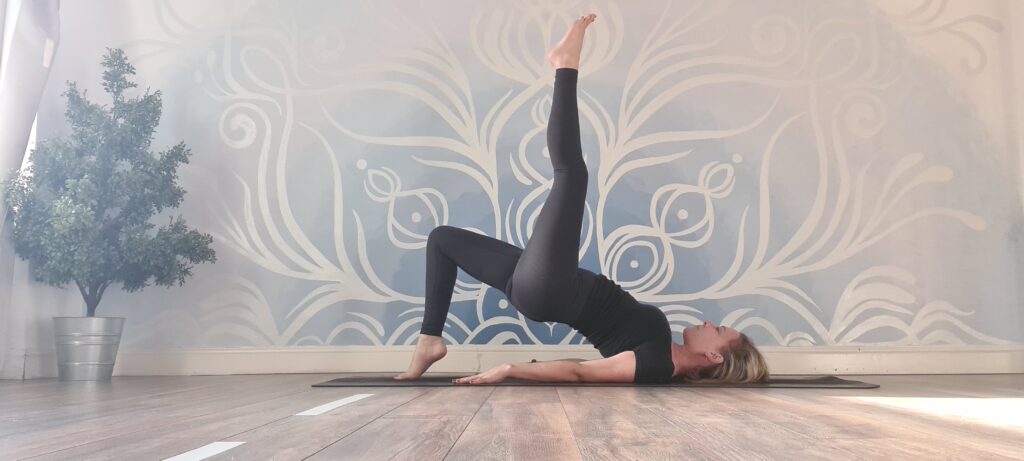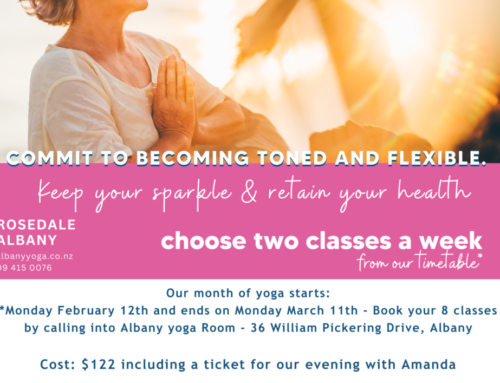
Yang to Yin – balance in a world of busyness
Finding balance can be tricky. When I set up Flow with Fi yoga, my wonderful yoga mentor Liz Joy Hardie helped me to write my mission statement and what came up for me was providing balance in a world of busyness. Having transitioned from a career where busyness was worn as a badge of honour, feeling depleted and worn out, I knew in my heart there was a more balanced approach that would better serve me and those I knew. Offering space and reflection to balance out the busyness felt necessary, and whilst I didn’t find this in my job, I did find it in my yoga path, and in particular in my practice and teaching of Yin Yoga.
Yin Yoga, which is a style of yoga that invites stillness in the body, is a practice I was drawn to in my late thirties and which I began to love so much that I trained in it to help me specialise as a yoga teacher. Throughout my twenties and thirties, I led an active lifestyle. I was a runner and would often find I had tight hamstrings and hips if I hadn’t stretched down enough after a run. Although I had a regular yoga practice, it was more often than not stronger yoga styles such as vinyasa, power and dharma, which also activated my muscles. As my yoga practice developed I would throw in the odd Yin Yoga class and start to find that more than the other classes I was participating in, it was helping me to create space in my body in the areas that were particularly tight from my active life. Not only did it help me in the physical spaces, but in my ever-active mind that felt as if it would never switch off, Yin Yoga, with its meditative qualities, helped me find peace. I was busy at work, busy in my social life; burning the candle at both ends. The lifestyle I was leading was incredibly Yang. Yang has a place in everyone’s lifestyle but in my life at the time, it was taking the lion’s share, depleting my energy and my body without enough respite. Yin Yoga slowly started to become a sacred space for me, and when I was training as a yoga teacher, I knew that it was going to be an area I would explore deeper.
Adding Yin Yoga into our practice can help us to create balance in our bodies, and this can be for several reasons:
- If we run or cycle and are used to pushing our bodies in dynamic exercise, a Yin Yoga practice can offer a counter to this that aids recovery in our bodies, creating more flexibility in tight spaces;
- As we age we find that our joints are a little less juicy than they used to be, and Yin Yoga can help us to keep everything fluid and supple by massaging our tissues;
- When we lead busy lives and feel as if we are always switched on, Yin Yoga, through its connection of body, mind and breath and its encouragement to drop into a still space in all three, can bring us relaxation and release.
I teach regular Yang to Yin classes on a Tuesday night, which explores this duality in physical practice. We start with the Yang Yoga – an energising and active flow to work the muscles and increase the heart rate. This includes standing poses, balances and moving flow sequences.
When we move to the Yin Yoga portion of the practice, we work with the opposite effect. Instead of active muscle engagement, we invite the muscles to be passive. We follow three key principles to help us to feel the benefits of Yin Yoga.
- Coming into the shape we are holding to the appropriate depth – in Yin Yoga, this is known as finding our edge. It’s important here that we don’t stretch beyond our physical limits.
- Softening the muscles to resist holding them actively in the pose, inviting the body instead to work into the more passive spaces, such as the connective tissues and joints
- Holding for a longer time to apply pressure to key points in the body created by the shape we are holding – often in classes I will hold students for between 3 and 5 minutes in a shape to help them feel the benefits of the pose. Holding a shape in the body for a long period of time, watching the breath and sitting with the sometimes uncomfortable sensations that arise from long holds invite us to settle in, and spend some time getting to know the areas in our bodies that need our attention, allowing the mind to tune into what is happening inside rather than being constantly stimulated by external world thoughts.
The benefit of a Yang to Yin practice is that it offers this balance in one yoga session.
We get to activate our muscles and raise our heartbeat in the first part of the session, and then take our bodies into a stiller space as we explore the more Yin side of our practice. For those struggling to build in time for a stiller practice, it can provide the perfect entryway. Throughout the entire session, I use a unifying theme, ensuring that the Yang practice flows seamlessly into the Yin. It takes the form of a well-balanced workout – active movement then passive rest. And throughout I offer breathwork cues and prompts to keep the mind in the present moment and focused on what’s happening in our bodies to keep us anchored.
Yin and Yang – the balance of opposing forces – draws its roots from ancient Chinese philosophy. We all have Yang and Yin qualities within us and can observe Yang and Yin around us. Yang energy is more active – it’s associated with sun, heat and day; active, extrovert and hard qualities. Yin energy is more passive – it’s associated with the moon, cool and night; passive, introverted and soft qualities. Although the classic image of Yin and Yang, shown above, is perfectly symmetrical, there are two key things to observe. The first is, you will note in the image, the black and white large shapes both have a dot in the middle of the opposite colour. This is because there is always an element of Yin in Yang and vice versa. We’re not dealing with absolutes. The second is that balance doesn’t need to be time-bound and we recognise some shifts may seem to favour one, but then over some time can balance out towards the other. A good example of this is day versus night. In the summer months, we naturally have more Yang energy, because the sun is hotter and the days are longer than the nights. In winter months we have the reversal of this. Once the year has passed, the balance of Yin and Yang, on reflection, will have been met. When we follow nature, Yin and Yang will often balance each other out in this way.
In our busy lives, however, we sometimes sidestep the cues of nature, pushing this natural balancing act out of kilter. We use electric lights to draw out the daytime, use caffeine to boost us into active energy, and allow heaters to warm our winter and fans to cool our summers. Whilst these things on their own won’t necessarily exhaust us, when they mean we start to favour one energy over another, this can leave us feeling out of balance. In our Western, fast-paced society, what tends to happen is that Yang’s qualities are seen as favourable over Yin’s qualities – active, busy, always on, fast, and competitive. And while Yang qualities are important, if they become dominant and overbearing, they will eventually deplete our energy, as the Yin element that is needed for balance is squeezed out. This is where we see burnout and exhaustion. Taking the time to add self-care activities into our lifestyle is of the utmost importance, but these tend to take a back seat and be seen as nice to have rather than essential.
However, we come back to that trick of balance. To go too far into a Yin state, and get seduced by that lovely stillness and softness can be overkill in its way. It’s important to still be active, to have fire and get up and go in our lives. Although I was finding peace in my Yin Yoga practice, I still wanted to have those more active parts of my life, my running and my other yoga classes. The trick is to find the balancing point where we have roughly equal parts of Yang and Yin – active and passive – to keep our bodies, minds and souls in tune. Both parts keep us whole – and those of us who feel more drawn to one energy may well find that if we are honest with ourselves, we will feel out of sorts if we don’t sometimes balance out the other energy.
What does your lifestyle currently feel like? Too Yang, too Yin, or well balanced? How does this make you feel? Does one energy need a little more application in your life right now?
You can join me Tuesday nights and explore this beautiful balance in your practice as we move from Yang to Yin.




